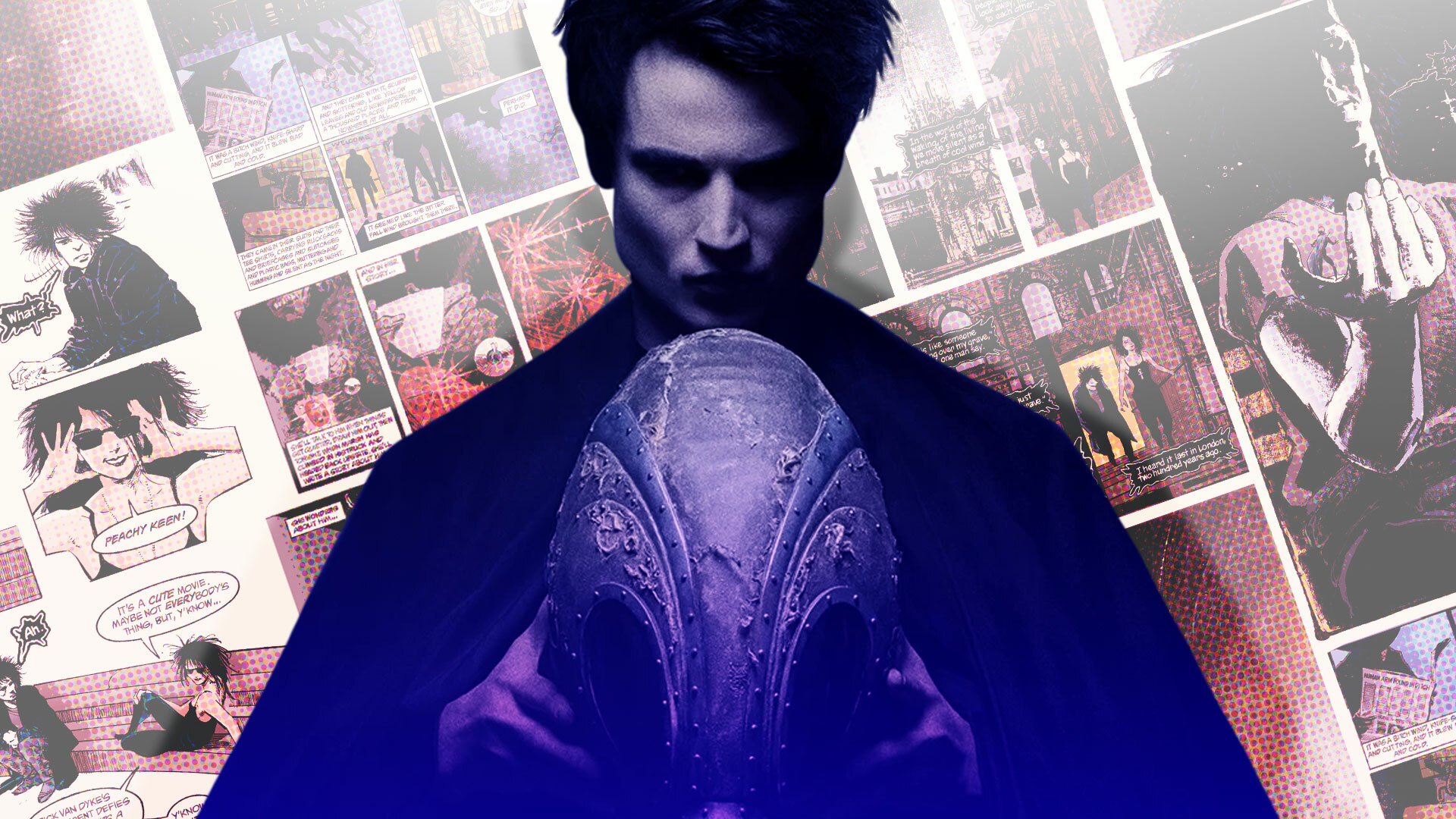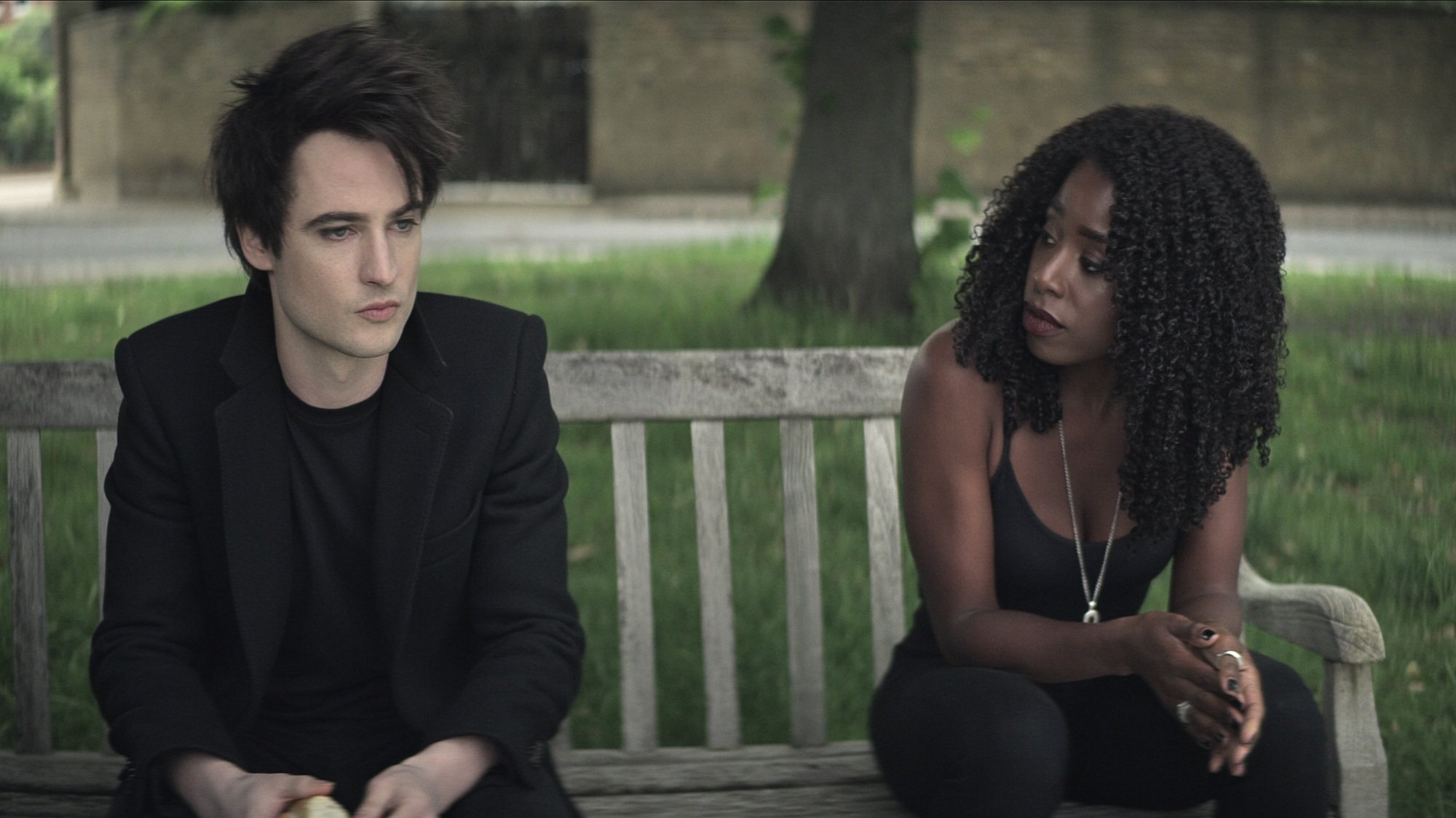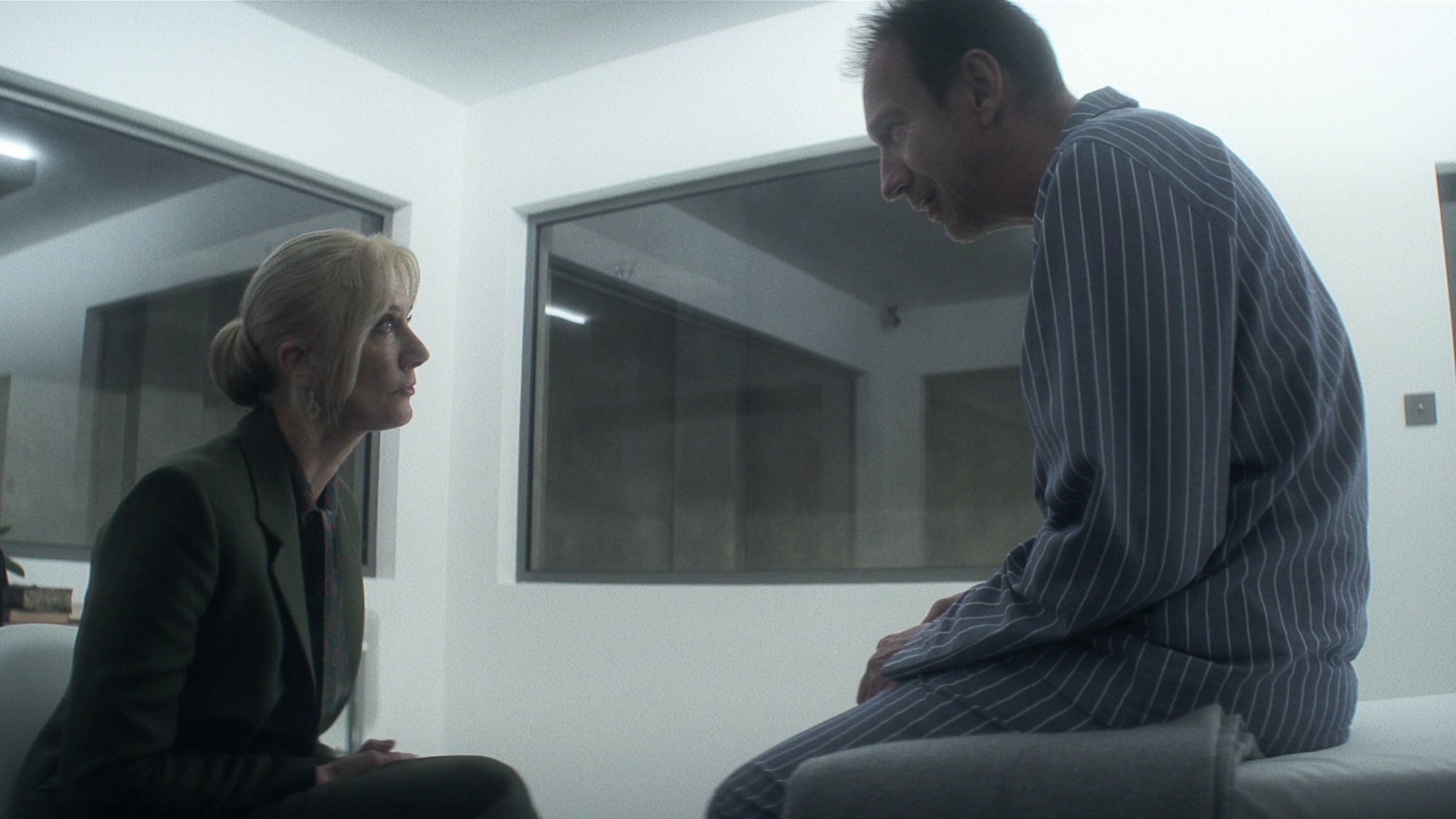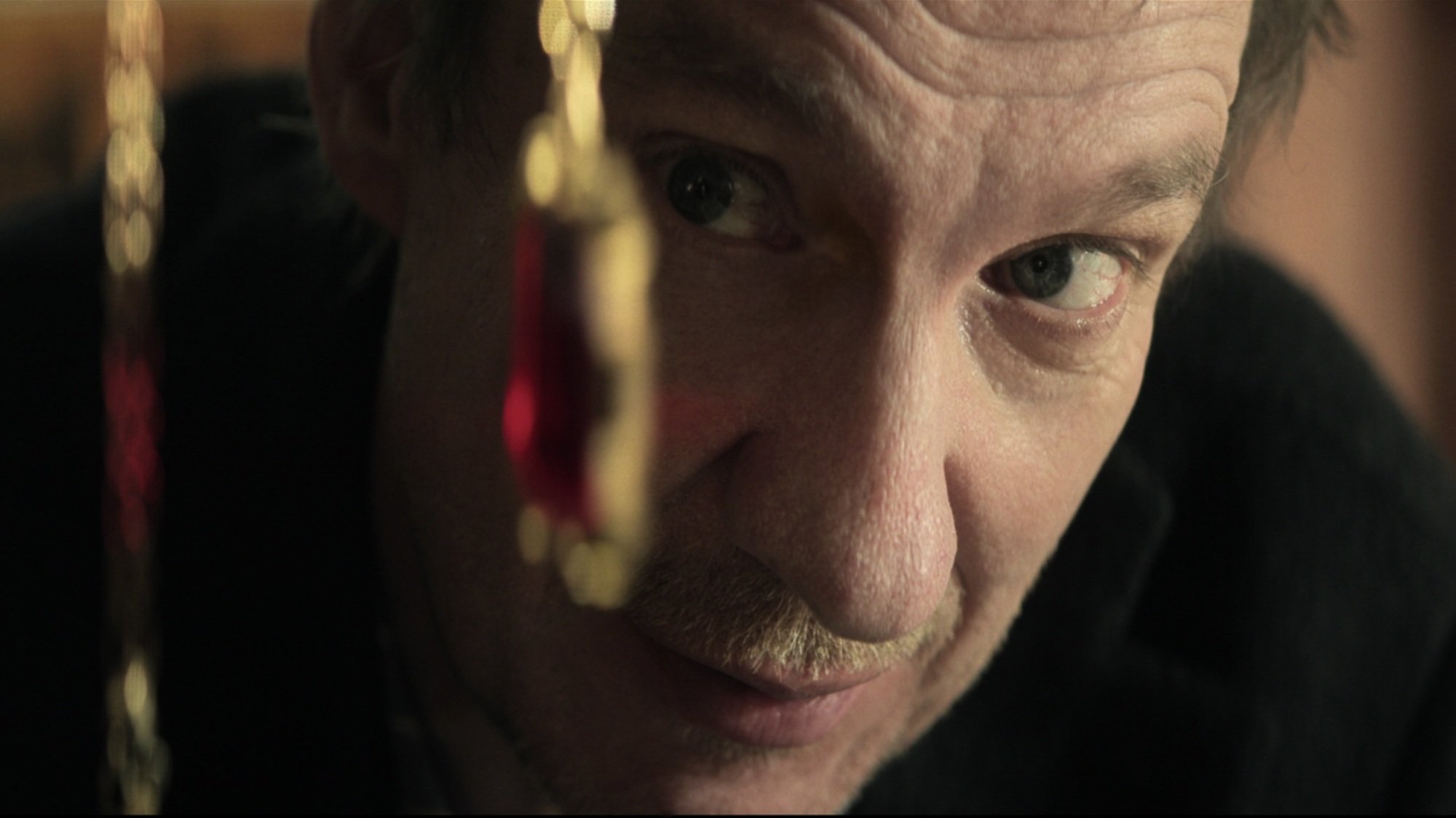
How do you adapt an award-winning comic book series that’s considered unfilmable? If you’re the creative team behind Netflix’s The Sandman, you move some things around, but mostly you hew closely to the beloved source material.
The Netflix adaptation of The Sandman is remarkably faithful to Neil Gaiman’s comics, despite the considerable challenges posed by very nature of the story. Showrunner Allan Heinberg and executive producers David S. Goyer and Gaiman have adapted the first 16 issues of the comics into a 10 episode-long season that, while most certainly not perfect, clearly works hard to do justice to and maintain the spirit of the originals.
‘The Sandman’ review: Netflix’s adaptation is no dream, but it’s not a total nightmare either
This Sandman still tells the story of Dream, played by Tom Sturridge, the lord of the dreaming realm who is imprisoned by magic-hungry humans at the beginning of the series. Upon his escape decades later, he must restore order to the Dreaming while contending with the chaos that ensued both in his world and the waking world while he was gone. One of the most noticeable changes the series makes early on is updating the date of Dream’s escape from the late 1980s to the present day, setting the rest of the story in 2021 — with some flashbacks, of course.
But that’s not the only way in which The Sandman diverges from its source material. Here are five more ways Netflix’s The Sandman is different from the comics.
Shifting comic storylines around

Credit: Courtesy of Netflix
Season 1 of The Sandman follows the comics’ first 16 issues, which includes arcs from both Preludes & Nocturnes andThe Doll’s House. It mostly takes a “one issue per episode” approach, but at only 10 episodes long, some storylines had to be moved around.
In some cases, this works better than others. Episode 4, titled “A Hope in Hell,” follows Dream’s journey to Hell to find his helm; to up the dramatic tension, this episode incorporates the storyline from Passengers, the issue of the comics following A Hope in Hell, wherein John Dee (David Thewlis) escapes from a mental institution to find Dream’s ruby. Having the stories play out simultaneously gives us a solid A plot and B plot as our protagonist and our antagonist hunt down Dream’s magical tools, teasing the inevitable showdown.
Episode 6, “The Sound of Her Wings,” is a less effective attempt at combining comic storylines. The first half of the episode is an extremely faithful adaptation of the comic issue of the same name, which sees Dream and Death (Kirby Howell-Baptiste) walking around and having a conversation about humanity. The second half of the episode is an extremely faithful adaptation of issue 13, Men of Good Fortune. There, we learn about Dream’s once-a-century meeting with the immortal human Hob Gadling (Ferdinand Kingsley).
The stories are both lovely and moving on their own, but when they’re awkwardly stitched together one right after the other, the result is one disjointed episode of TV. This episode is clumsily trying to give us a deeper understanding of Dream’s relationship to humans and to change, but at the end of the day, these are two comic issues that may have worked better by themselves.
Going off-panel

Credit: Courtesy of Netflix
In an interview with Den of Geek, Heinberg and Gaiman mentioned that one of the most exciting parts of the adaptation process was the fact that they could portray events from The Sandman that don’t happen on the page but which are still important. For example, in the comics, we never see Hal perform in drag due to the fact, Gaiman explains, that comics aren’t the best medium for musical performances. The show takes that opportunity for new material and runs with it, incorporating several of Hal’s numbers into the show and casting Hedwig and the Angry Inch writer/director/star John Cameron Mitchell as Rose Walker’s drag-performing landlord.
Another great new addition is the final discussion between John and his mother Ethel Cripps (Joely Richardson) in the show’s third episode. In the comics, Ethel dies off-page and bequeaths John her protective amulet. In the show, Ethel gives John the amulet directly and then dies onscreen as the protections fade away. Before that, we also get an illuminating conversation between her and John about Dream. This helps establish John’s motivations going forward, which is extremely useful because…
No major DC tie-ins

Credit: Courtesy of Netflix
It might not be bursting at the brim with Justice League references, but The Sandman is still a DC comic. For example, John Dee is kept in Arkham Asylum alongside Batman villains like Scarecrow. He is also the supervillain known as Doctor Destiny, who gets up to a lot of evil shenanigans in other DC comics, and whose appearance is monstrous and scabby and all around frightening. The Sandman series forgoes this path, instead cementing John as a human and tweaking his backstory.
Lyta and Hector and Rose and Jed

Credit: Liam Daniel/Netflix
Two other DC comics characters appearing in The Sandman are Lyta (Razane Jammal) and Hector Hall (Lloyd Everitt). In the wider DC comics, they have superhero identities of their own, but in The Doll’s House arc of The Sandman, they serve a particular purpose. Hector is dead, but rogue nightmares Brute and Glob have trapped his consciousness. They prop him up as their own version of the Sandman in an attempt to create a new head of the Dreaming. Hector visits his pregnant wife Lyta in the dream realm so the two have more time together, and occasionally Lyta is visited by Jed Walker (Eddie Karanja), the little brother of Rose Walker (Kyo Ra). However, when Dream finds out about what Brute and Glob have done, he casts Hector back to the land of the dead and declares he will return for Lyta’s child — who, by virtue of its time spent gestating in the Dreaming, is now his.
Most of this storyline appears in Netflix’s The Sandman, but there are several tweaks. Now, Lyta is a close friend of Rose’s, traveling with her in search of Jed. Jed, trapped by a new nightmare named Gault, actually takes on the role of the fake Sandman. It’s a poignant choice that emphasizes his desire to escape from his abusive adoptive father. I also appreciated the connection between Lyta and Rose, as it pulls together characters from important early threads of The Sandman and gives us another chance to see the effects of Rose’s role as the dream vortex.
More of the Corinthian

Credit: Liam Daniel/Netflix
One of the biggest and best ways in which The Sandman diverges from its source material is how it introduces the nightmare known as the Corinthian (Boyd Holbrook) earlier in the story. The show makes the wise decision to embrace him as a villain right from the start. From his confrontation with Dream in the first episode to his manipulation of Rose and Jed at the serial killer convention, it’s clear he’s the season’s main antagonist. His role in the comics is contained to The Doll’s House arc, which is effective as we move from issue to issue. However, in a TV series that’s released all at once, it’s nice to have another throughline we can follow as we binge. Plus, the Corinthian’s encouragement of humans’ worst impulses makes him a great foil for Dream throughout. The Corinthian may be the stuff of nightmares, but his expanded role is what adaptation dreams are made of.
